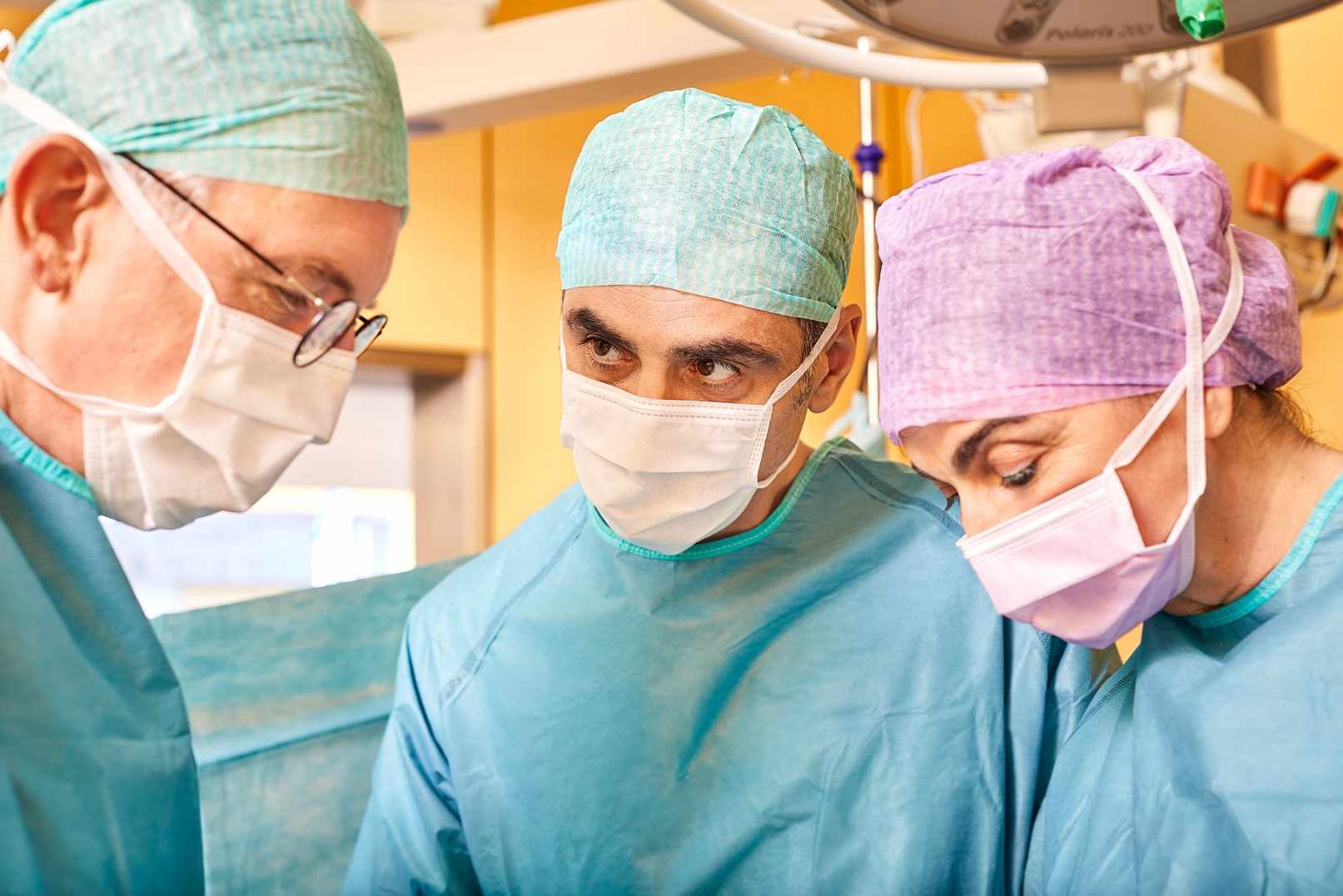The so-called sports hernia is a common “sports injury” in professional athletes. Patients with a soft groin suffer from pain (pulling, stinging, burning) in the area of the affected groin, especially during physical exertion.

Your Specialized Center for Hernia Treatment
Sports hernia
(Athletic pubalgia)
Beforehand in a nutshell
What is a sports hernia?
A sports hernia is a weakening of the posterior wall of the inguinal canal, but not an inguinal hernia. It occurs mainly in highly trained professional athletes.
How does a sports hernia feel?
A sports hernia is most noticeable during physical/athletic exertion with a pulling, stabbing or burning pain in the groin region.
What to do in case of a sports hernia?
If conservative treatment attempts are unsuccessful, surgical stabilization using the minimal repair technique or TAPP repair should be performed after a detailed (ultrasound) examination.
Sports hernia: Causes
A sports hernia is a weakening of the posterior wall of the inguinal canal. This is not a hernia of the abdominal wall. Since this consists of connective tissue and not muscle, it cannot be strengthened or stabilized by muscle building or special training. Although the abdominal muscles are usually excellently developed, tissue weakness develops in a muscle-free triangle (Hesselbach triangle) of the groin region.
If the pressure inside the abdominal cavity increases (e.g. due to sudden movements), the muscle-free wall layer bulges. Nerves running in the vicinity are compressed by this and cause typical, extremely unpleasant nerve pain (with or without pain radiating into the testicle or inner thigh).

OP Clarification: If conservative measures have been exhausted, surgery should be considered for a sports hernia
Symptoms and consequences
Sudden movements, especially in sports (e.g. soccer) that place a lot of strain on the groin region, can lead to increased pain. The pain may radiate to the testicles or inner thigh. The cause of the symptoms is more often mistakenly assumed to be an inguinal hernia.
Diagnostics
Physical examination
Before the treatment, the exact diagnosis is made by the specialist. First of all, the patient’s medical history is discussed: when did the complaints occur, how do they manifest, what sports-related stresses are known. The groin region is palpated to get an impression of the location of the pain point as well as the strength of the abdominal wall tissue and to rule out a hernia gap.
General examinations
In close cooperation and coordination with your family doctor, the necessary, general preliminary examinations such as ECG and laboratory tests (blood sampling) are performed.
Dynamic ultrasound
A dynamic ultrasound examination developed by Professor Niebuhr can be used to precisely assess the texture, strength and mobility under compression of each layer of the connective tissue. A hernia gap as cause of the complaints can be safely ecluded.
To exclude tendon insertion inflammation or bony changes, additional magnetic resonance imaging may be required.
The diagnosis of a sports hernia should be made by a hernia specialist, as it can be extremely difficult to correctly classify the symptoms of various problems.

There are two procedures available for sports hernia surgery. Reinforcement of the abdominal wall with a synthetic mesh may be advisable.
Sports hernia: Therapy
After unsuccessful conservative therapy attempts, the decision for surgical stabilization should not be postponed beyond a period of 4 – 6 weeks. Prolonged irritation of nerves can, in individual cases, turn into a chronic pain syndrome, which can lead to a slow reduction of pain even after successful groin stabilization.
Two methods are available:
“Minimal Repair Technique”
The minimal repair procedure was developed for professional athletes with a sports hernia. The decisive factors here are the size of the weak spot and the stability of the adjacent abdominal wall.
In this procedure, the posterior wall of the inguinal canal is stabilized only in the area of the sonographically defined weak point in the transversalis fascia using a special suture technique. Healthy parts of the posterior wall are protected. The procedure enables a rapid resumption of sports activities in particular.
Professional athletes with the typical symptoms can be operated on without a mesh using the “Minimal Repair Technique” if necessary. This ensures full elasticity of the abdominal muscles and unimpeded sliding of the muscle and fascia layers against each other, which athletes depend on.
TAPP reparation
If the defect is larger, however, preference should be given to reinforcing the excessively weak abdominal wall with a mesh:
During an abdominal endoscopy, the hernia is closed by inserting a synthetic mesh between the peritoneum and the abdominal wall. After the abdominal cavity is inflated with CO2 gas, an abdominal endoscopy is performed first. This allows for a good view on the weak points of the abdominal wall and the preparation of the mesh insertion. The mesh is inserted between the peritoneum and the abdominal wall, where it closes all the weak points of the groin region.
Advantages of the TAPP operation
- Virtually scarless through tiny skin incisions (MILS technique)
- Laparoscopy included
- Diagnosis and treatment of additional inguinal hernia or additional umbilical hernia possible in one surgery without any problems
- Abdominal endoscopy provides a view of all abdominal organs (including the small and large intestine); any adhesions between the intestine and the abdominal wall can be diagnosed and removed